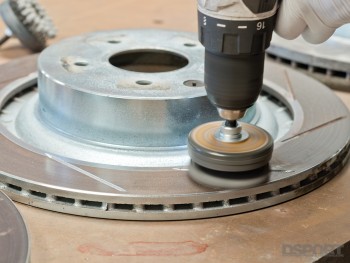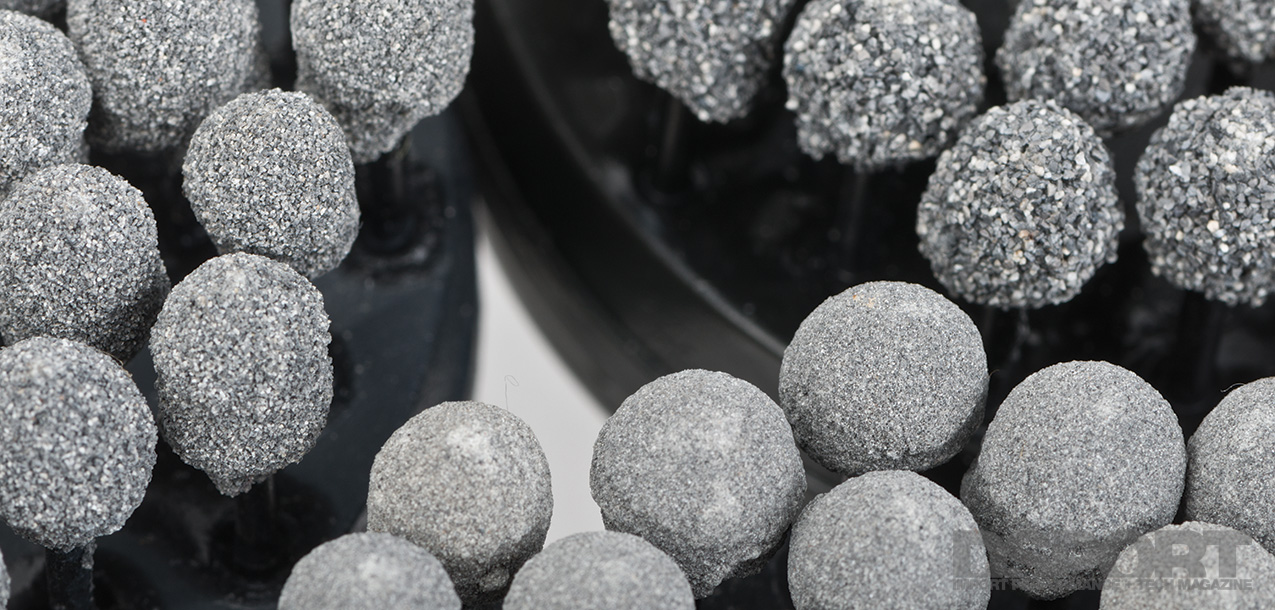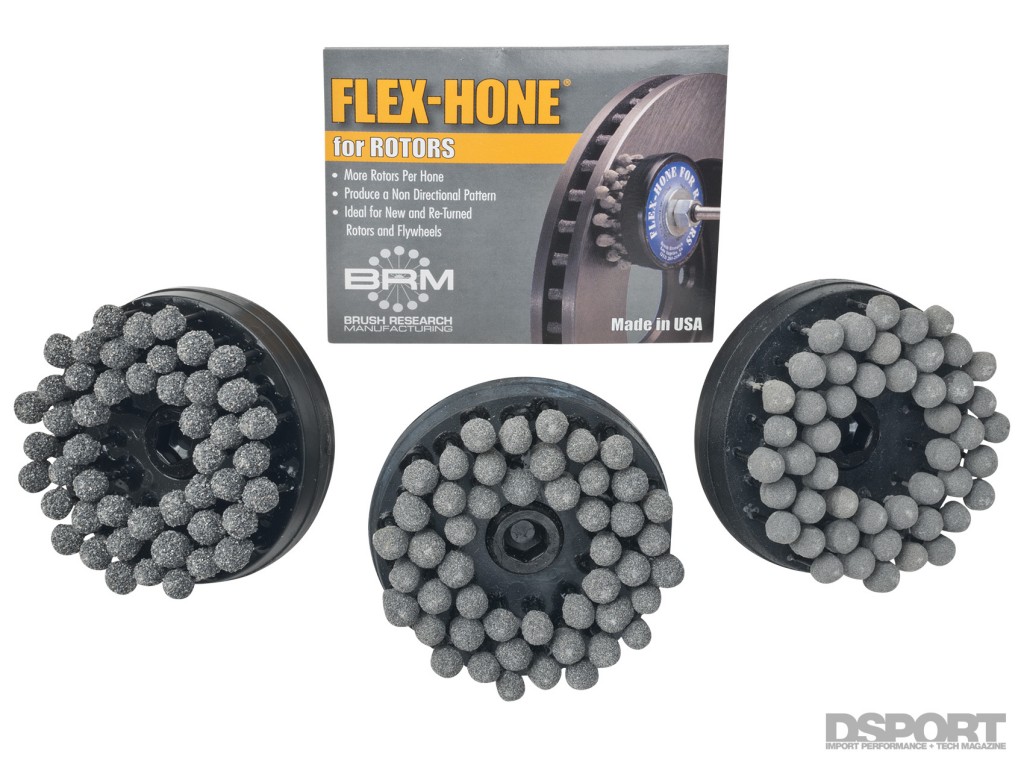Dingleberry hone, ball hone, glaze buster or bead brush. Whatever nickname you might have for the tool, the original Flex-Hone was designed in 1972 to refinish cylinder walls in automotive applications. Used by machine shops, do-it-yourselfers and just about everyone in between, the Flex-Hone tool allows users to achieve a plateau finish free of cut, torn and folded material. Advantages of this type of surface include faster engine break-in, better piston ring seal and increased performance. And while the cylinder-specific Flex-Hone has been offered for years in different bore sizes and abrasives, the new Flex-Hone for Rotors uses the same technology to now address flat surfaces.
Text and Photos by Jun Chen
DSPORT Issue #144
SAME PURPOSE, NEW SURFACE
Flywheels, clutch pressure plates and disc brake rotors also share many of the same surface finish issues as cylinder walls. While the surface finish of a rotor can suffer from corrosion, it can also pick up the glazing from an overheated brake pad. Glazing occurs when the pad is heated beyond its operating temperature range. The glaze can transfer from the pad to the rotor and cause the braking system to stop working as efficiently. After discovering the need for a surface finishing tool for metal discs and plates, Brush Research Manufacturing (BRM) developed its new Flex-Hone for Rotors. Designed to create the ideal surface finish for proper pad bedding, we decided to test the Flex-Hone for Rotors on a set of track-abused rotors.
WARPED OR NOT
 In the past, enthusiasts could either choose to replace or re-surface their rotors. While most people would like to replace their rotors every time the pads are changed, it simply isn’t cost-effective. Re-surfacing rotors, otherwise known as “turning” the rotors, is the process of grinding the surface of a brake rotor flat. This process generally requires taking the rotors to a shop with both a lathe and the tooling necessary for rotor surface refinishing. In addition, the “warping” that most people attribute brake judder to, may not be what they think it is.
In the past, enthusiasts could either choose to replace or re-surface their rotors. While most people would like to replace their rotors every time the pads are changed, it simply isn’t cost-effective. Re-surfacing rotors, otherwise known as “turning” the rotors, is the process of grinding the surface of a brake rotor flat. This process generally requires taking the rotors to a shop with both a lathe and the tooling necessary for rotor surface refinishing. In addition, the “warping” that most people attribute brake judder to, may not be what they think it is.
According to Frank Filipponio at StopTech / Centric Parts, most “warped” rotors aren’t actually warped. Due to the type of iron used in modern rotors, Frank states “they are almost impossible to physically warp because of the rotor’s hardness and stability.” Rather, the vibration felt while braking is usually due to an uneven transfer layer of adherent pad friction material on the face of the rotor. Bedding the pads improperly often causes this issue. Other causes of brake judder include surface corrosion and unsuccessful machining of the rotor. Fortunately, many surface problems can be solved with the Flex-Hone for Rotors.



